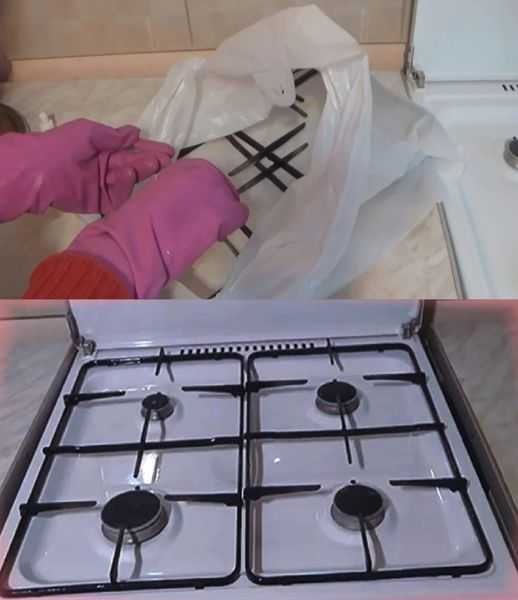ADVERTISEMENT
This method is best done monthly or as needed, depending on how often you cook.
Store leftover ammonia in a tightly sealed bottle, out of reach of children and pets.
Use this method outdoors or with windows open to reduce ammonia fumes indoors.
Variations:
For extremely dirty grates, repeat the process a second time.
Add a few drops of dish soap during the rinse phase for extra shine.
You can use this same method to clean oven racks or grill grates.
FAQ:
Is ammonia safe to use?
Yes, when used properly and with precautions (gloves, ventilation). Never mix ammonia with bleach—it creates toxic fumes.
Do I have to scrub the grates afterward?
Not usually. The ammonia fumes loosen carbon and grease, making it easy to wipe off. Only minor brushing may be needed.
What if I don’t have a plastic grocery bag?
You can use a large zip-top bag, garbage bag, or any airtight plastic container.
Can I use this method on cast iron grates?
Yes. Just ensure they are dried thoroughly after rinsing to prevent rusting.
Conclusion:
Cleaning stove grates doesn’t have to be a dreaded chore. With this simple grocery bag and ammonia method, you can remove stubborn grease and carbon buildup overnight—effortlessly. It’s an easy, low-cost, and highly effective way to keep your kitchen looking spotless and your appliances functioning at their best.
ADVERTISEMENT
